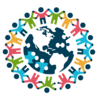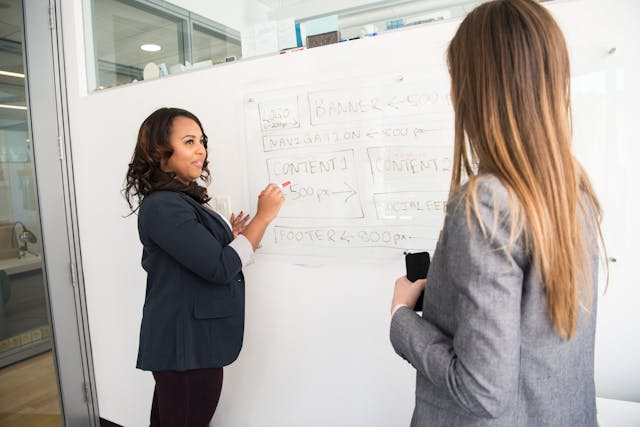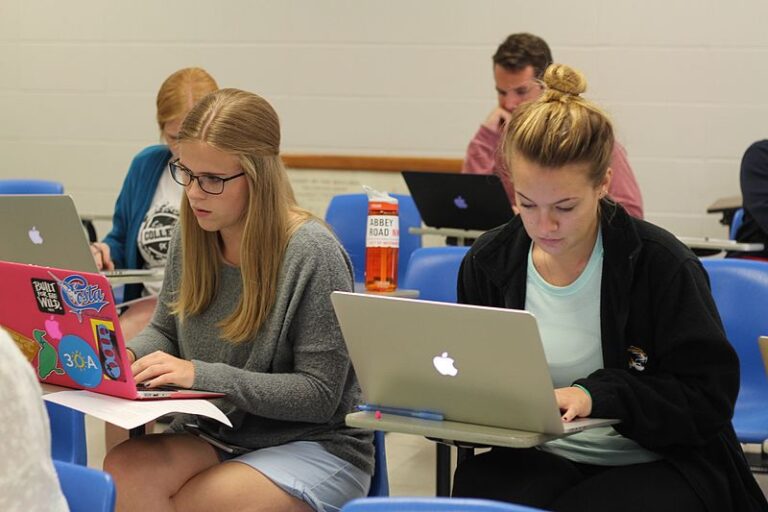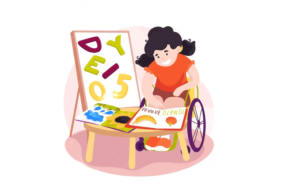Inclusive education strives to offer identical learning opportunities to students with disabilities by incorporating them into regular classrooms with their non-disabled peers. Guided by the ideals of fairness and inclusion, this method comes with its set of hurdles and advantages. This article will delve into the obstacles of executing inclusive education and underscore its profound advantages for students with disabilities.
What is Inclusive Education?
Inclusive learning promotes the harmonious inclusion of every student, irrespective of their unique abilities or challenges, within mainstream classrooms. It underscores the fundamental right of each learner to access education tailored to their distinct needs, empowering them to achieve greatness. Through cultivating an atmosphere of acceptance and unity, this approach shatters preconceived notions and defies societal biases. The responsibility of guaranteeing necessary modifications, provisions, and backing for every learner lies heavily on educators, families, and society at large. Essentially, inclusive learning celebrates differences, guarantees equal chances, and fosters a teaching environment where all learners are recognized and embraced.
Importance of Inclusive Education
Inclusive learning remains a fundamental tenet of contemporary educational thought, highlighting the intrinsic value and promise of every learner. By integrating students from various abilities into mainstream settings, it nurtures an environment of empathy, appreciation, and shared dignity. Such an approach amplifies the academic journey for differently-abled students by offering them equivalent curricular exposure and interactions. Simultaneously, it aids students without special needs by fostering compassion, challenging biases, and introducing multifaceted viewpoints. Moreover, this approach resonates with the wider societal principles of fairness and inclusiveness, readying students for a multifarious world and emphasizing the essence of unity and interdependence. In essence, inclusive learning is crucial in guaranteeing that everyone, regardless of their unique capabilities, can flourish academically, interpersonally, and emotionally.

- Recognizing the multifaceted impact of inclusive education is crucial to understanding its significance. Here are some key points that highlight its importance:
- Pillar of Modern Learning: Inclusive teaching emerges as a central concept in today’s pedagogical landscape, highlighting the distinct value and potential of each student.
- Promoting Acceptance and Unity: By merging students from varying skill sets into conventional educational settings, a culture of insight, appreciation, and shared dignity is cultivated.
- Enriched Academic Pathways: Inclusive strategies amplify the academic experience for differently-abled students, granting them comprehensive curriculum access and authentic peer exchanges.
- Fostering Compassion and Pluralism: This approach aids mainstream students by deepening compassion, confronting prejudices, and embracing diverse thought processes.
- Reflecting Community Values: Inclusive teaching mirrors society’s wider ideals of fairness and belonging, preparing students for an eclectic world.
- Teamwork and Harmony: Such teaching underscores the essence of teamwork and harmonious living, pivotal for thriving in a diverse society.
- Access for Everyone: Fundamentally, inclusive teaching ensures every learner, irrespective of their strengths or challenges, has avenues to excel in various life spheres.
Obstacles in Implementing Inclusive Learning
Introducing inclusive learning is not without its hurdles. Key challenges encompass:
- Resource Constraints: Effective inclusive learning demands suitable resources like tailored instructional tools, affordable writing aids, assistive devices, and auxiliary staff. Many academic establishments find it hard to provide the requisite resources for students with disabilities.
- Educator Readiness and Skill Development: Teachers often need targeted training and consistent professional growth to cater to students with disabilities. Ensuring educators are well-prepared with the essential expertise to assist diverse students can be daunting.
- Perceptual Challenges: Misunderstandings and negative perceptions about disabilities can act as roadblocks to inclusion. Some may harbor prejudiced views or misconceptions, impeding the smooth integration of students with disabilities in general education settings.
- Societal Prejudice and Peer Inclusivity: Students with disabilities can sometimes grapple with societal prejudice and difficulties in gaining full acceptance from their classmates. Issues like bullying and feeling isolated can negatively affect their academic journey and mental health.
Advantages of Integrative Learning
While there are hurdles, integrative learning brings forth a plethora of advantages for students with disabilities:
- Scholastic Superiority: Holistic education provides students with unique needs the platform to delve into the same study material and avenues as their peers. When supported appropriately and with necessary adjustments, such students can excel in their studies and reach their zenith.
- Fostering Interpersonal Ties: This modality encourages meaningful interactions and weaves strong connections among learners, regardless of their distinct capabilities. These exchanges endorse compassion, appreciation for varied backgrounds, and collective growth. Relationships formed in such settings often contribute to more inclusive communities and mitigate feelings of isolation.
- Voice and Autonomy: Holistic education inspires students with special needs to articulate their desires, map out their goals, and advocate for their rights—vital attributes they’ll retain throughout their journey.
- Amplified Resource Availability: Adopting this educational stance guarantees augmented access to support mechanisms within a mainstream academic setting. Learners gain insights from proficient educators, support personnel, and expert service entities while being integral members of an all-encompassing scholastic milieu.
- Adaptive Skills and Worldly Readiness: Holistic education readies students to embrace a diverse world in their future. By interacting with a spectrum of talents and instructional approaches, students develop tolerance, recognition, and a more profound worldview.
Conclusion
Integrative learning is a multifaceted and dynamic journey that demands dedication, adequate resources, and sustained efforts to navigate its challenges. Yet, its positive impacts on students with disabilities are irrefutable. Such an approach enhances academic outcomes, fosters social connections, encourages self-expression, and cultivates vital life competencies. By championing this model, educational establishments pave the way for a setting that celebrates differences, encourages inclusivity, and prepares every student, irrespective of their capabilities, for accomplishments in academia and life thereafter.

















+ There are no comments
Add yours